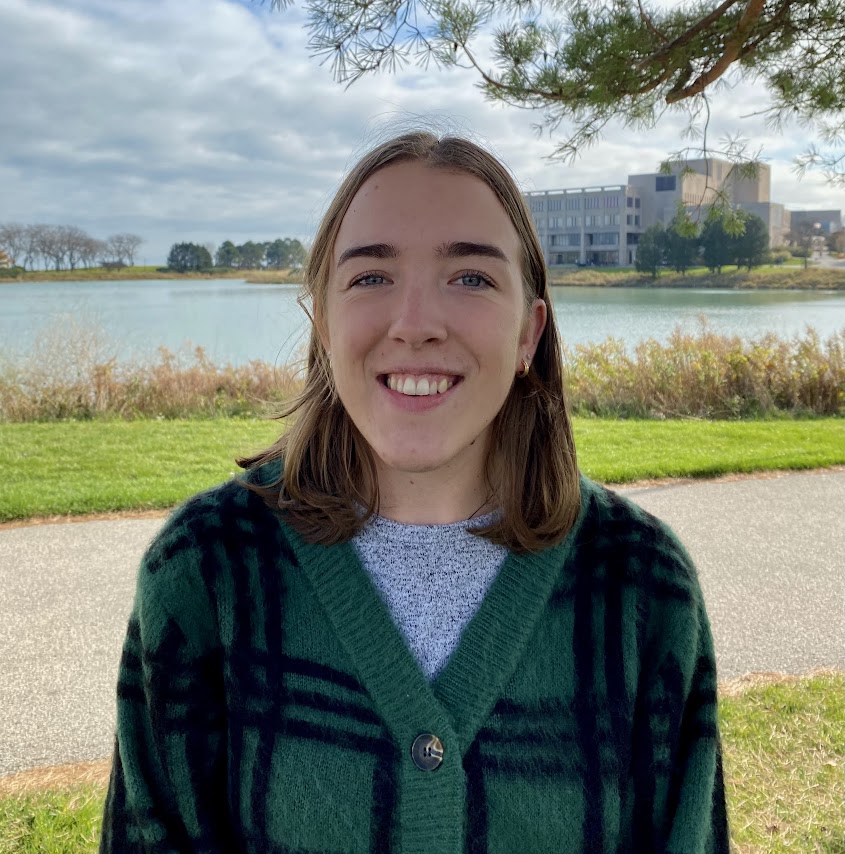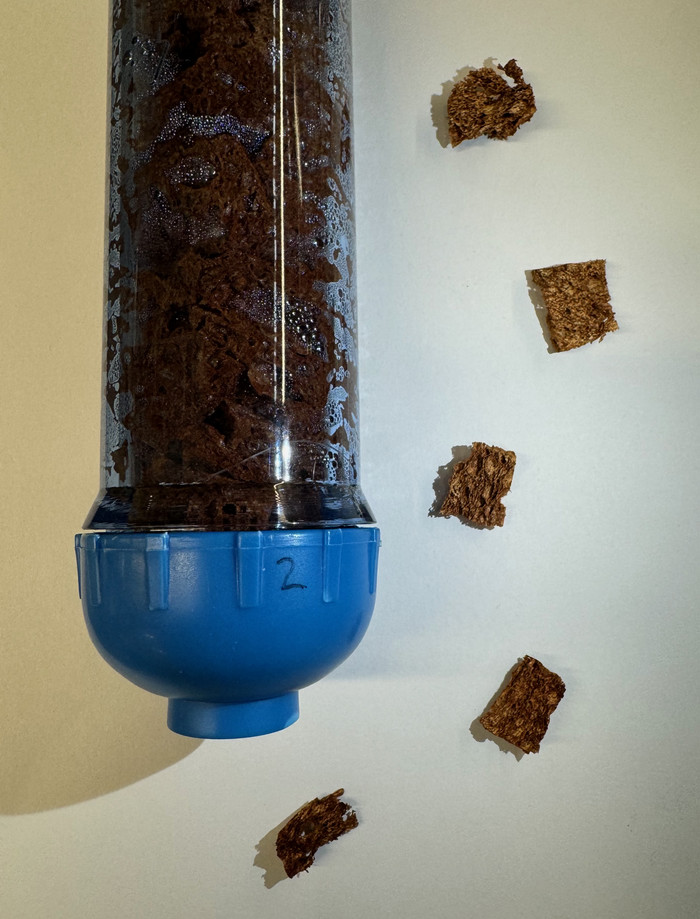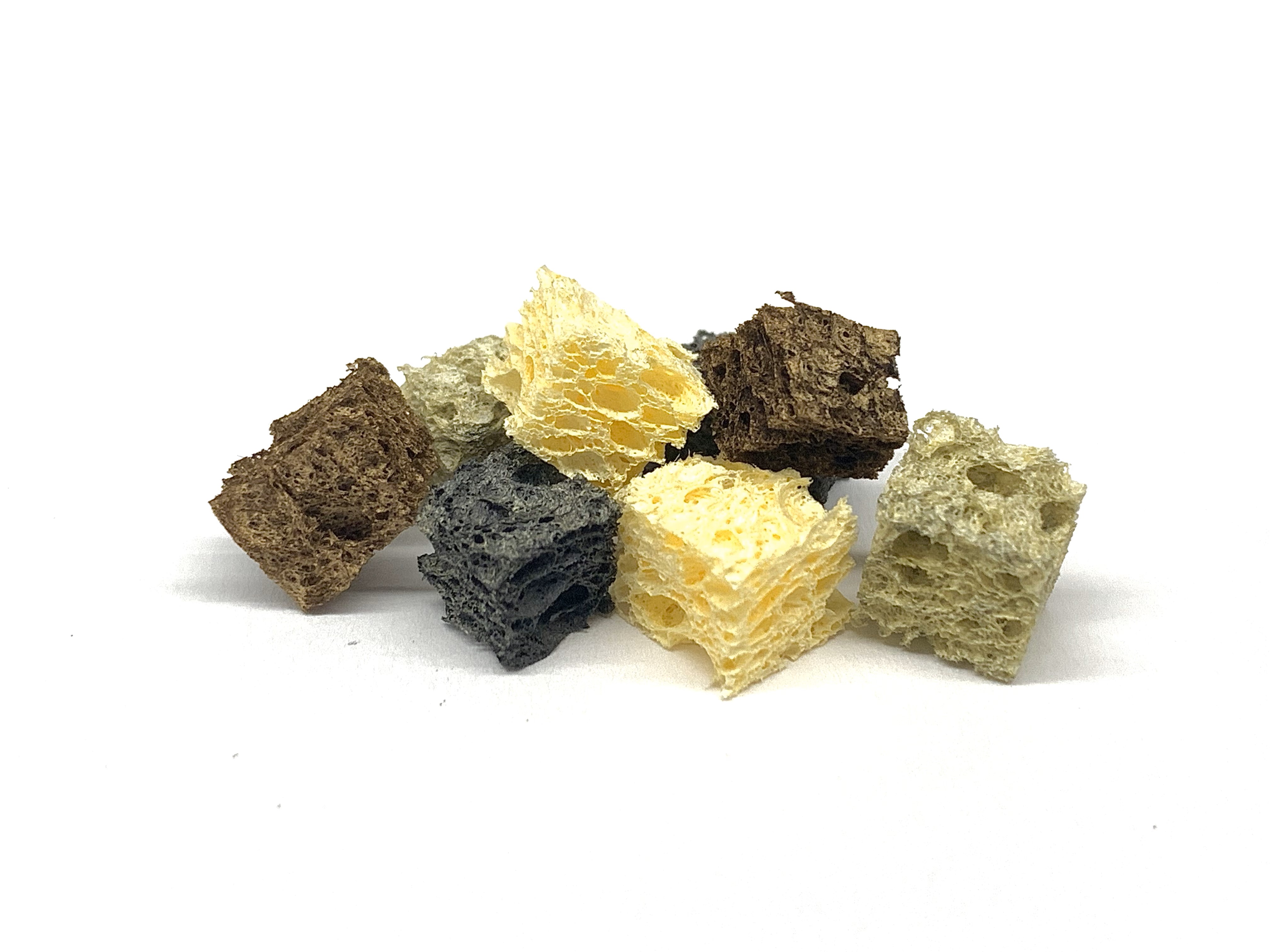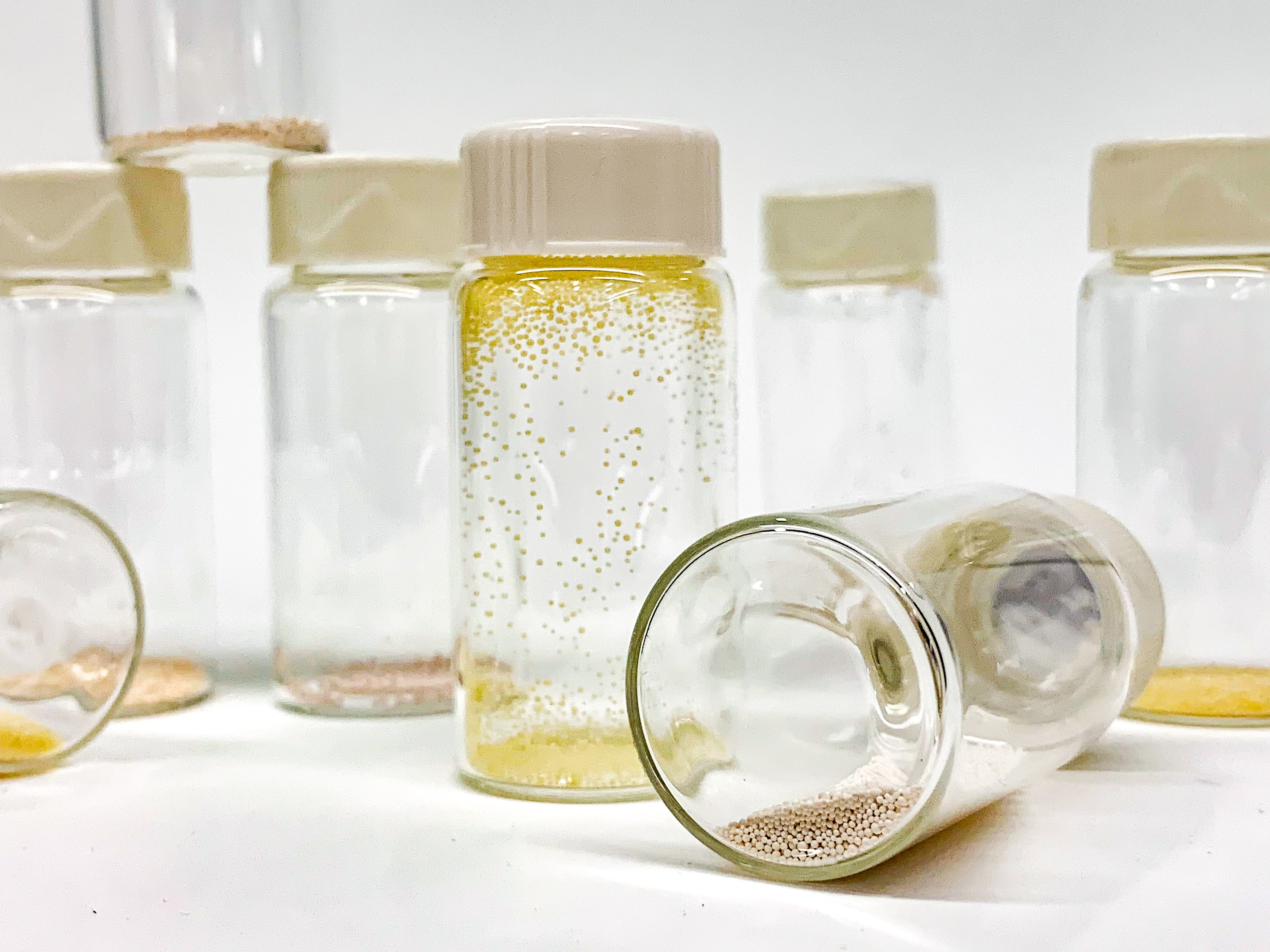Earth Day
2024 Earth Day
Soak It In!
Environmental remediation involves the process of restoring or mitigating environmental damage caused by pollutants, including the removal of harmful contaminants from soil, water, and air, and is vital to improving ecological and human health! When it comes to cleaning water contaminated with heavy metals and microplastics, effective remediation often requires a combination of methods tailored to the specific characteristics of the contamination and the surrounding environment. For Earth Day 2024, we are taking a look at ways in which a two researchers have used a common cellulose sponge, with an exceptional coating, to draw pollutants from the water!
Welcome Kelly Matuszewski and Jack Hegarty, current PhD students with the VPD Group:
Kelly Matuszewski
Hi Kelly! Please tell us a little about yourself.
My name is Kelly, and I am a second year PhD student in Materials Science and Engineering in

Professor Dravid’s research group. For undergrad, I attended Penn State, and I am originally from central New Jersey. In my free time I enjoy running along the Chicago lakefront and playing beach volleyball.
Can you share a few details about your research and how long you have been in this field?
My research involves studying how to remove and recover phosphates and heavy metals from water. This involves investigating coatings for sponge-like materials to try to tailor our material to remediate specific pollutants for sustainable water treatment and a circular economy. I began sustainability research at Northwestern, so I have been doing this research for about a year and a half!
What inspired you to be in your current field of study? And what do you continue to find inspiring in your research?
I only learned about environmental sustainability as a field of study when I got to college and took some geography gen-ed courses. I learned about climate change and plastic pollution and was appalled by how little attention was being brought to these issues. What I continue to find inspiring in my research is the amount of young people that are now interested in sustainability. I feel really hopeful for the future when I see young researchers who are like “I don’t know exactly what I want to do, but it has to involve sustainability”.
 Were there any particular challenges in developing the PEARL media to target pollutants like metals and nutrients in stormwater?
Were there any particular challenges in developing the PEARL media to target pollutants like metals and nutrients in stormwater?
Some of the challenges of developing PEARL media to target metals and nutrients in water is getting it to be selective. We don’t want our sponge to just absorb every single pollutant in water, we want to target specific pollutants!
Can you share an accomplishment you are proud of and what would be your dream project to be involved in?
I am very proud that our group was offered a grant from the Trienen’s Institute for Sustainability and Energy to work with StormTrap to work on translation of PEARL media towards commercial applications. I am very excited for this project which aims to remove phosphates and metals from stormwater. It’s hard to think of a dream project when this is really the opportunity I have been looking for, translational research that can make a real-world impact!
Read about Kelly and her team making exciting advances in removing heavy metals from stormwater runoff in the Chicago area here!
Jack Hegarty
Hi Jack! Please tell us a little about yourself.
I’m a 4th year PhD candidate in Materials Science and Engineering. Before moving here for grad school, I lived in New England. I grew up in Connecticut and then attended Brown University for my undergraduate degree. In my free time, I love to get outside and play tennis, pickleball, and spikeball. I’m a big fan of hiking and have visited 15 national parks, with two more to come this summer! I also enjoy being creative, particularly making jewelry and sculpture, and taking photos.
school, I lived in New England. I grew up in Connecticut and then attended Brown University for my undergraduate degree. In my free time, I love to get outside and play tennis, pickleball, and spikeball. I’m a big fan of hiking and have visited 15 national parks, with two more to come this summer! I also enjoy being creative, particularly making jewelry and sculpture, and taking photos.
Can you share a few details about your research and how long you have been in this field?
 Since starting grad school in 2020, my research has developed into two main areas. The first of these is carbon capture, where I work to develop new sorbent materials to remove carbon dioxide from the atmosphere to combat climate change. This can be a difficult task since, while CO2 is an important greenhouse gas, compared to some other gases in the atmosphere it exists at quite low concentrations. As a result, the capture and storage process typically requires large amounts of energy, meaning that the process as a whole is difficult to scale up. To get around this issue, my collaborators and I make new materials that allow us to replace the typical energy input steps in this process, such as heating up the materials, with a step where we expose them to water. This is a promising method to use less overall energy. In addition to this project, I have become interested in the issues of microplastic and nanoplastic pollution. To this end, I have developed new tools for understanding fibrous microplastics. Huge volumes of these pollutants are created by washing clothes, many of which are made of synthetic textile materials. These microplastics are one of the most abundant types in our oceans. I have been developing software tools that can take images containing these microplastics and automatically characterize them. These techniques can be implemented by other scientists to help the community better understand and abate microplastic pollution. Finally, I have also looked into ways of removing nanoplastics—the even smaller cousin of microplastics—from water by creating sponges that are designed to specifically attract them.
Since starting grad school in 2020, my research has developed into two main areas. The first of these is carbon capture, where I work to develop new sorbent materials to remove carbon dioxide from the atmosphere to combat climate change. This can be a difficult task since, while CO2 is an important greenhouse gas, compared to some other gases in the atmosphere it exists at quite low concentrations. As a result, the capture and storage process typically requires large amounts of energy, meaning that the process as a whole is difficult to scale up. To get around this issue, my collaborators and I make new materials that allow us to replace the typical energy input steps in this process, such as heating up the materials, with a step where we expose them to water. This is a promising method to use less overall energy. In addition to this project, I have become interested in the issues of microplastic and nanoplastic pollution. To this end, I have developed new tools for understanding fibrous microplastics. Huge volumes of these pollutants are created by washing clothes, many of which are made of synthetic textile materials. These microplastics are one of the most abundant types in our oceans. I have been developing software tools that can take images containing these microplastics and automatically characterize them. These techniques can be implemented by other scientists to help the community better understand and abate microplastic pollution. Finally, I have also looked into ways of removing nanoplastics—the even smaller cousin of microplastics—from water by creating sponges that are designed to specifically attract them.
What inspired you to be in your current field of study? And what do you continue to find inspiring in your research?
As a kid, I’d spend countless hours in the woods behind my house exploring. For as long as I can remember, I have enjoyed spending time in nature. Later, when I learned about the many ways in which human pollution negatively impacts both the environment as well as communities around the world, I felt motivated to address it. While issues like greenhouse gas emissions and microplastic pollution are dauntingly large, being engaged in a community of thousands of other individuals passionate about addressing them propels me to keep pushing forward.
What challenges have you found in developing materials to target microplastic removal/remediation?
There are many ways in which removing microplastics and nanoplastics can be difficult. For instance, the category of microplastic is extremely broad. Some of them are large enough to be easily seen by the eye while others are many times smaller than the width of a hair, and nanoplastics are many times smaller than that. They come in many different shapes, from fibers, to pellets, to films. Also, plastic itself is a broad category of materials containing many different polymers, each of which has its own properties. Beyond this, microplastic surfaces often become coated with various biofilms and other pollutants. Each of these differences makes it so that various microplastics behave very differently and therefore complicate the targeted removal of microplastic pollution.
the category of microplastic is extremely broad. Some of them are large enough to be easily seen by the eye while others are many times smaller than the width of a hair, and nanoplastics are many times smaller than that. They come in many different shapes, from fibers, to pellets, to films. Also, plastic itself is a broad category of materials containing many different polymers, each of which has its own properties. Beyond this, microplastic surfaces often become coated with various biofilms and other pollutants. Each of these differences makes it so that various microplastics behave very differently and therefore complicate the targeted removal of microplastic pollution.
Can you share an accomplishment you are proud of and what would be your dream project to be involved in?
One accomplishment I am proud of is the tools I have worked on to improve microplastic characterization since they can be employed by other scientists in their research and help spur new microplastic insights and solutions.
Thank you so much Kelly and Jack for sharing your research with us! At NUANCE we know how small things can make a big impact and your work with cleaning tiny elements from the worlds water supply is making a huge impact!!
